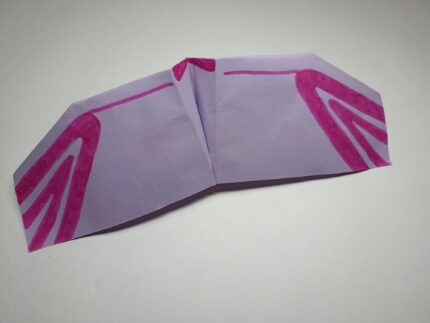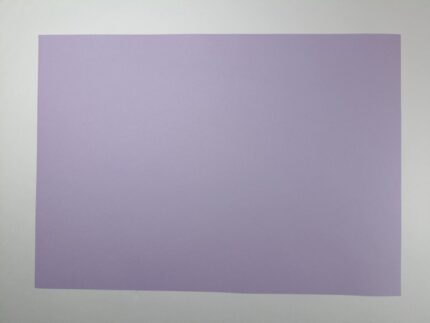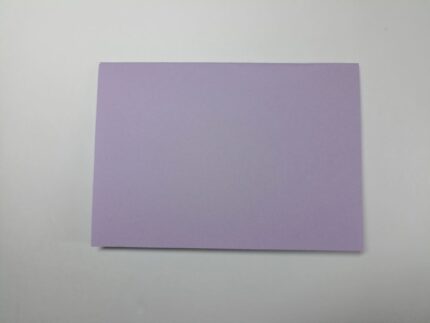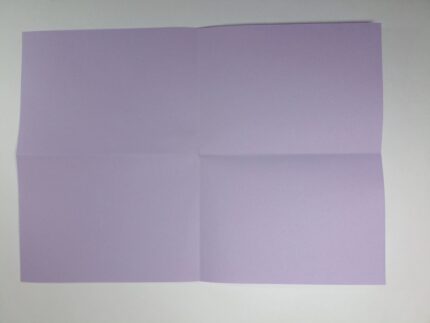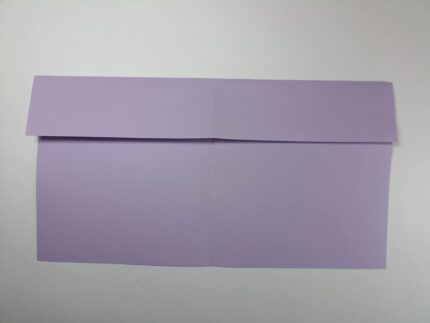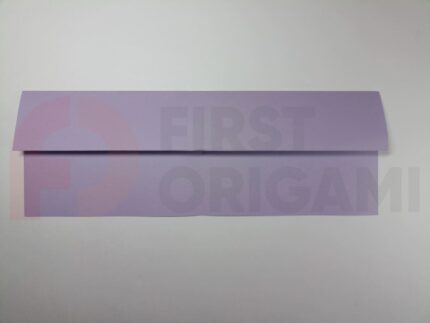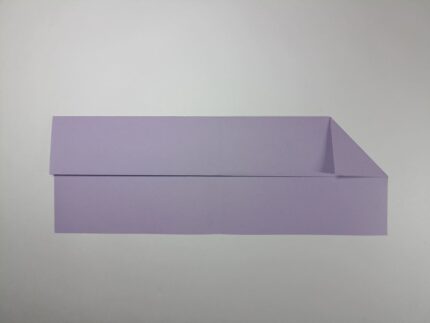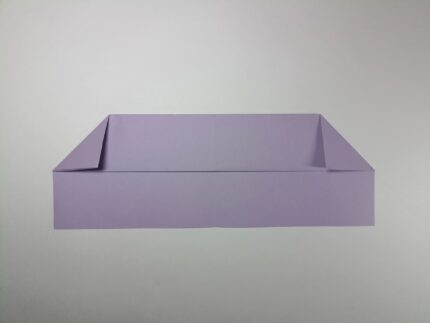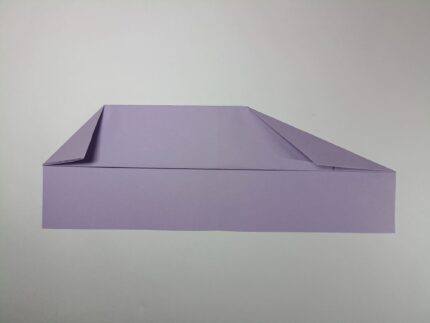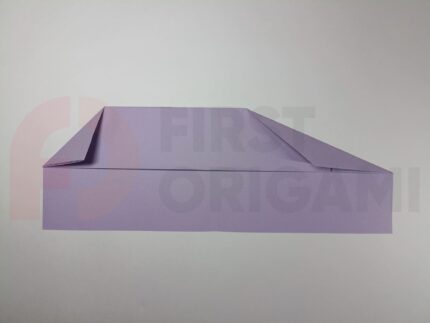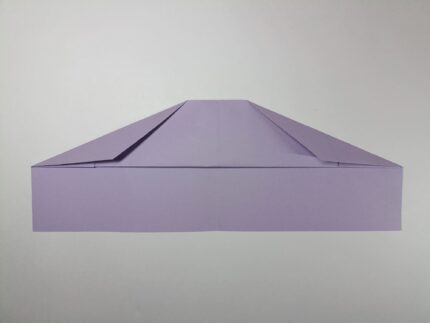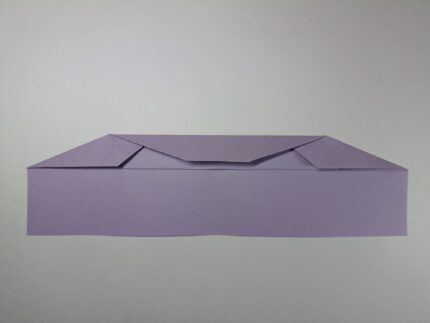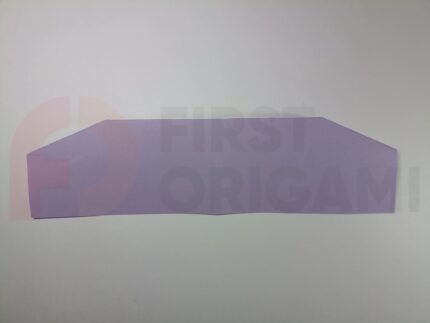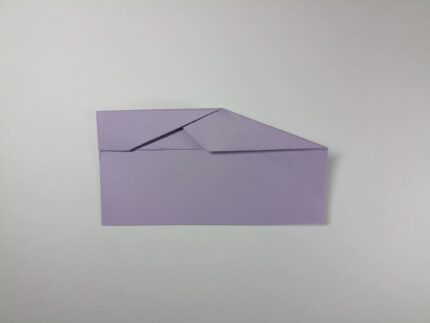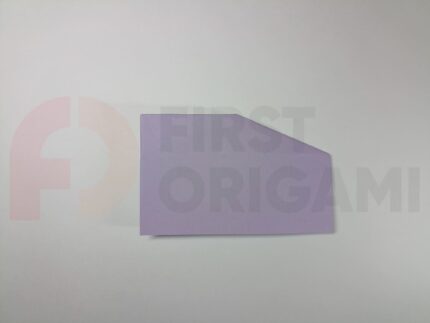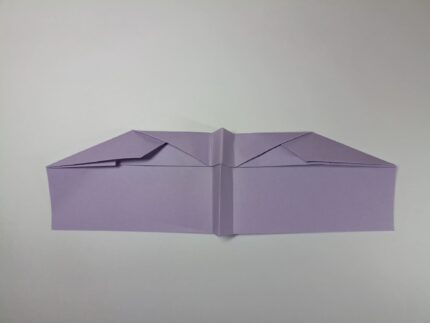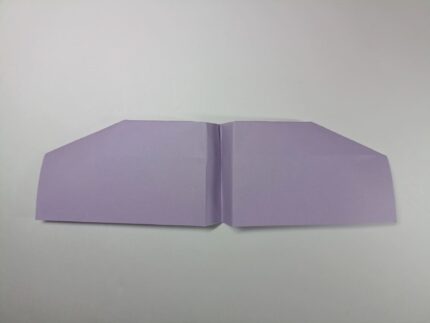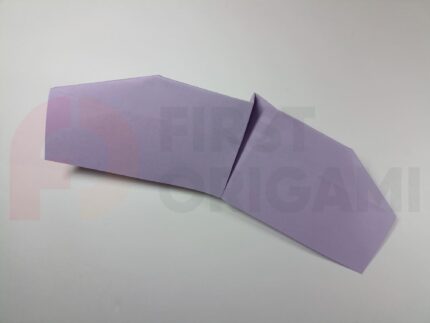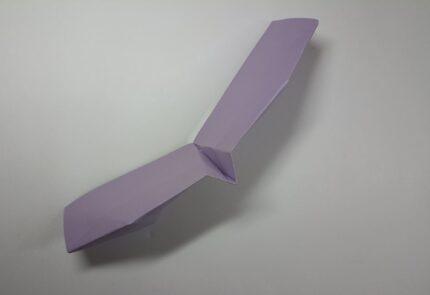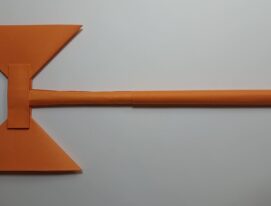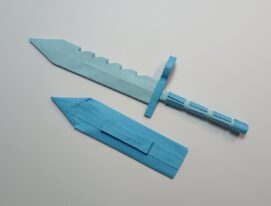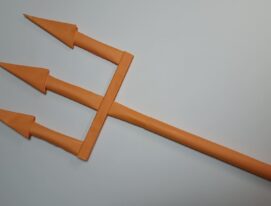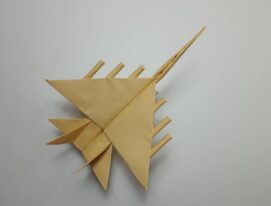Origami Underside Airplane
This model is distinguished by its unusual design. The airplane does not have a fuselage or tail, only large wings like those of a paraglider or hang glider. This aircraft is not for speed but for an extended flight duration. It glides slowly, at some moments, hovering in the air like a bird.
The wings, raised upward relative to the horizontal line, form a dihedral angle, which gives the structure stability, allowing the glider to stay in the air longer and maintain balance. An airplane with wings located at such an angle does not tilt or roll over in flight.
On a horizontal sheet of paper, mark a vertical line in the middle, aligning the side lines, and crease the fold.
Make a fold towards yourself along a long line, aligning the top of the sheet with the middle.
Fold again along the bottom line of the previous fold. This is the nose part of the airplane, the densest, consisting of four layers of paper.
Fold the side corners of the rectangle on both sides toward you along the bottom line of the previous fold.
Make folds on both sides, aligning the bases of the inverted triangles with the horizontal line as in the illustration.
Close the figure along the middle vertical line, aligning the edges and corners of the sheet of paper.
It is better to organize competitions with a flying wing not indoors, but outdoors. Gusty winds can prevent a launch, as can calm weather. A slight breeze of wind will make the flight interesting and unpredictable. You can practice by throwing the airplane up at a right angle, by launching it forward with force and speed, or by launching it forward with a slight push. You can send a wing flying from a high hill. The main rule is that there are no objects around that impede the flight.
